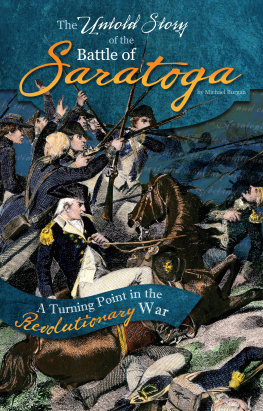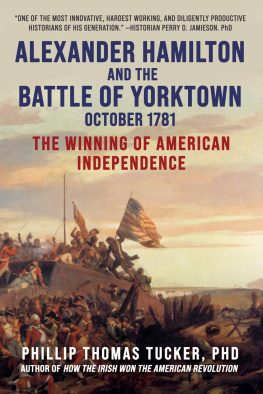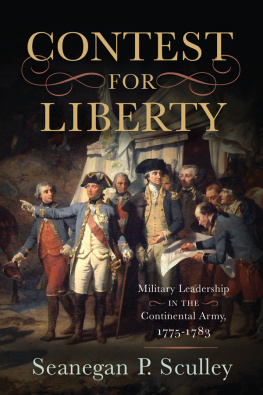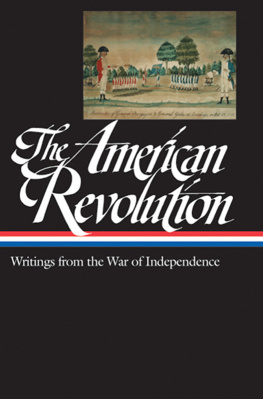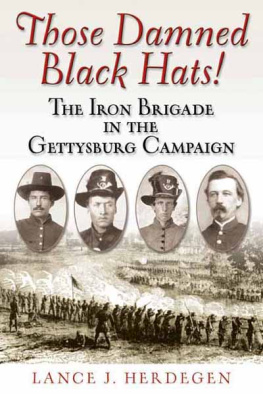

2008, 2010 by John F. Luzader
Maps 2008, 2010 Theodore P. Savas; Theodore P. Savas and J. David Dameron
All rights reserved. No part of this publication may be reproduced, stored in a retrieval system, or transmitted, in any form or by any means, electronic, mechanical, photocopying, recording, or otherwise, without the prior written permission of the publisher. Printed in the United States of America.
Cataloging-in-Publication Data is available from the Library of Congress.
ISBN 978-1-932714-85-2
eISBN 9781611210354
05 04 03 02 01 54321
First paperback edition, first printing

Published by
Savas Beatie LLC
521 Fifth Avenue, Suite 1700
New York, NY 10175
Editorial Offices:
Savas Beatie LLC
P.O. Box 4527
El Dorado Hills, CA 95762
Phone: 916-941-6896
(E-mail) editorial@savasbeatie.com
Savas Beatie titles are available at special discounts for bulk purchases in the United States by corporations, institutions, and other organizations. For more details, please contact Special Sales, P.O. Box 4527, El Dorado Hills, CA 95762, or you may e-mail us at sales@savasbeatie.com, or visit our website at www.savasbeatie.com for additional information.
To my wife Jean, my sons, John and David, my daughter Alice.
And to the National Park Service, which supported
my family while I indulged my hobbies.
Foreword
According to many historians, history is replete with turning points. Each is a catalyst upon which a social movement, a government, a technology, or a war made a decisive turn and forever changed the destiny of the overall historic event.
Properly speaking, the turning point of the American Revolutionthe most singular decisive moment of the Revolution as a wholemust be Congress resolution for independence voted on July 2, 1776. That event marked the point of no return, and the ratification of the Declaration of Independence that followed manifested the position of what was then a majority of Americans: the United States was a free nation of independent states no longer subject to the rules and laws of Britain. A declaration by a rogue citizenry assembled in Philadelphia was one thing. Validating Congress bold action in the eyes of the enemy and other nations of the world, which could only happen through military means, was an entirely different matter.
The military events of 1775 generally favored the Patriots cause, largely because the British were caught off-guard during the wars early months. Their operational plan for subduing the American rebellion, however, nearly ended the war the following year. That it did not was due largely to General George Washingtons masterful end-of-year attacks on Trenton and Princeton, New Jersey, and Thomas Paines timely and uplifting Crisis . The stunning reverses in the field saved the American cause from its pending ruin born of continual British victories and its own disillusionment. Such was the precarious state of the revolution in early 1777, and why that year promised to be a decisive one.
Operating under the belief that the end of the rebellion in America was in sight, British military strategy for 1777 was even more ambitious than it had been in 1776. While the British Army of the North American Colonies (lying on the Atlantic coast) commanded by General Sir William Howe orchestrated an invasion to take the American capital of Philadelphia, General Sir Guy Carletons British Army of the Province of Qubec (and its dependent territories and the frontiers) would engage in the more audacious design of moving a pair of armies from Canada in order to combine their strengths at Albany, New York. As is so often the case in history, politics intervened. Command of the invasion passed from Carleton to an excessively overconfident, dashing, and eager-to-prove-himself lieutenant general named John Burgoyne.
The 1777 British invasion from Canada is often referred to as the Burgoyne Campaign because he personally planned, proposed, lobbied for, organized, and commanded the operation. Though the Burgoyne Campaign promised much, success eluded British arms. A lack of coordination, overconfidence, and a dangerously-low opinion of the Army of the United Statestogether with American determination, brilliant defensive strategy, and the stellar leadership of soldiers like Benedict Arnold, John Stark, Daniel Morgan, and Thaddeus Kosciuszko, to name just a fewcarried the day. No single American was responsible for the tremendous victory, but the lions share of the credit rests with Northern Department commander Horatio Gates. His decision to fight on the west side of the Hudson River, and then aggressively pursue and surround Burgoynes retreating army resulted in the catastrophic British surrender. And it was the surrender at Saratoga, not its several battles and satellite operations, which marked the true turning point of the American Revolutionary War.
There are many reasons why the Saratoga surrender proved to be such a decisive pivot point in the wars fortunes. The most important was that it convinced France to openly recognize the independence of the United States and join it in a commercial and military alliance against Great Britain. The recognition of American independence by France, one of the ages great world powers, gave necessary legitimacy to the self-proclaimed United States. That recognition provided French soldiers, money, credit, and matriel to the Patriot cause, all of which combined to bring about the decisive battlefield victory at Yorktown in October 1781, where the majority of the Franco-American allied force was comprised of French soldiers and sailors.
Saratogas impact did not end with the involvement of France, for truly great moments in history create shock waves that are not restricted to place or time. French, and later Spanish and Dutch, involvement in the American War for Independence elevated the conflict from a colonial rebellion to the international stage. To the dismay of Great Britain, the warring colonial powers clashed in Florida, the West Indies, India, Africa, Gibraltar, the islands in the English Channel, and the Mediterranean Sea. French involvement in the war proved expensive, however, and ended up ruining the French economy. Deteriorating economic circumstances on the continent were a major cause of the French Revolution and the eventual ascension of Napolon Bonaparte, the Napoleonic Wars, and a continued upheaval of European government and society well into the 20th century. The success of the American Revolution channeled energies into other national movements of independence throughout the world in countries in Central and South America, Africa, and Asia. The people whose lives were affected by the success of the American forces at Saratoga number in the hundreds of millions.
Due in great measure to President Franklin Delano Roosevelt, Saratoga National Historical Park was authorized in 1938 in order to preserve and protect the grounds of the battlefield, as well as interpret for the public its monumental significance. Its ironic that the fields of fighting, which had such an impact on the shaping of world events, are so well preserved. Nearly 100% of the battle sites are located inside the boundary of the park, as are perhaps 90% of the encampment and fortification sites. That, in combination with a stunningly beautiful viewshed, is a monument to 20th and 21st century historic preservation.



